A mutation in a ganglioside biosynthetic enzyme, ST3GAL5, results in salt & pepper syndrome, a neurocutaneous disorder with altered glycolipid and glycoprotein glycosylation
- PMID: 24026681
- PMCID: PMC3869362
- DOI: 10.1093/hmg/ddt434
A mutation in a ganglioside biosynthetic enzyme, ST3GAL5, results in salt & pepper syndrome, a neurocutaneous disorder with altered glycolipid and glycoprotein glycosylation
Abstract
'Salt & Pepper' syndrome is an autosomal recessive condition characterized by severe intellectual disability, epilepsy, scoliosis, choreoathetosis, dysmorphic facial features and altered dermal pigmentation. High-density SNP array analysis performed on siblings first described with this syndrome detected four shared regions of loss of heterozygosity (LOH). Whole-exome sequencing narrowed the candidate region to chromosome 2p11.2. Sanger sequencing confirmed a homozygous c.994G>A transition (p.E332K) in the ST3GAL5 gene, which encodes for a sialyltransferase also known as GM3 synthase. A different homozygous mutation of this gene has been previously associated with infantile-onset epilepsy syndromes in two other cohorts. The ST3GAL5 enzyme synthesizes ganglioside GM3, a glycosophingolipid enriched in neural tissue, by adding sialic acid to lactosylceramide. Unlike disorders of glycosphingolipid (GSL) degradation, very little is known regarding the molecular and pathophysiologic consequences of altered GSL biosynthesis. Glycolipid analysis confirmed a complete lack of GM3 ganglioside in patient fibroblasts, while microarray analysis of glycosyltransferase mRNAs detected modestly increased expression of ST3GAL5 and greater changes in transcripts encoding enzymes that lie downstream of ST3GAL5 and in other GSL biosynthetic pathways. Comprehensive glycomic analysis of N-linked, O-linked and GSL glycans revealed collateral alterations in response to loss of complex gangliosides in patient fibroblasts and in zebrafish embryos injected with antisense morpholinos that targeted zebrafish st3gal5 expression. Morphant zebrafish embryos also exhibited increased apoptotic cell death in multiple brain regions, emphasizing the importance of GSL expression in normal neural development and function.
Figures

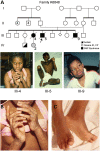

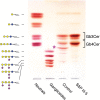
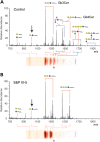



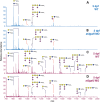

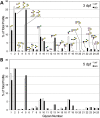
Similar articles
-
Neural-specific alterations in glycosphingolipid biosynthesis and cell signaling associated with two human ganglioside GM3 synthase deficiency variants.Hum Mol Genet. 2023 Dec 1;32(24):3323-3341. doi: 10.1093/hmg/ddad146. Hum Mol Genet. 2023. PMID: 37676252 Free PMC article.
-
Whole Exome Sequencing Reveals a Novel Homozygous Variant in the Ganglioside Biosynthetic Enzyme, ST3GAL5 Gene in a Saudi Family Causing Salt and Pepper Syndrome.Genes (Basel). 2023 Jan 30;14(2):354. doi: 10.3390/genes14020354. Genes (Basel). 2023. PMID: 36833282 Free PMC article.
-
Total loss of GM3 synthase activity by a normally processed enzyme in a novel variant and in all ST3GAL5 variants reported to cause a distinct congenital disorder of glycosylation.Glycobiology. 2019 Mar 1;29(3):229-241. doi: 10.1093/glycob/cwy112. Glycobiology. 2019. PMID: 30576498
-
Ganglioside GM3 Synthase Deficiency in Mouse Models and Human Patients.Int J Mol Sci. 2022 May 11;23(10):5368. doi: 10.3390/ijms23105368. Int J Mol Sci. 2022. PMID: 35628171 Free PMC article. Review.
-
Diseases of ganglioside biosynthesis: An expanding group of congenital disorders of glycosylation.Mol Genet Metab. 2018 Aug;124(4):230-237. doi: 10.1016/j.ymgme.2018.06.014. Epub 2018 Jun 28. Mol Genet Metab. 2018. PMID: 29983310 Review.
Cited by
-
Enhanced Susceptibility to Chemoconvulsant-Induced Seizures in Ganglioside GM3 Synthase Knockout Mice.ASN Neuro. 2020 Jan-Dec;12:1759091420938175. doi: 10.1177/1759091420938175. ASN Neuro. 2020. PMID: 32664815 Free PMC article.
-
Neuronal Ganglioside and Glycosphingolipid (GSL) Metabolism and Disease : Cascades of Secondary Metabolic Errors Can Generate Complex Pathologies (in LSDs).Adv Neurobiol. 2023;29:333-390. doi: 10.1007/978-3-031-12390-0_12. Adv Neurobiol. 2023. PMID: 36255681
-
The clinical spectrum of inherited diseases involved in the synthesis and remodeling of complex lipids. A tentative overview.J Inherit Metab Dis. 2015 Jan;38(1):19-40. doi: 10.1007/s10545-014-9776-6. Epub 2014 Nov 21. J Inherit Metab Dis. 2015. PMID: 25413954 Review.
-
Synthetic GM1 improves motor and memory dysfunctions in mice with monoallelic or biallelic disruption of GM3 synthase.FEBS Open Bio. 2023 Sep;13(9):1651-1657. doi: 10.1002/2211-5463.13669. Epub 2023 Jul 13. FEBS Open Bio. 2023. PMID: 37401916 Free PMC article.
-
Oral Ganglioside Supplement Improves Growth and Development in Patients with Ganglioside GM3 Synthase Deficiency.JIMD Rep. 2019;45:9-20. doi: 10.1007/8904_2018_134. Epub 2018 Sep 13. JIMD Rep. 2019. PMID: 30209782 Free PMC article.
References
-
- Saul R.A., Wilkes G., Stevenson R.E. ‘Salt-And-Pepper’ pigmentary changes with severe mental retardation: a new neurocutaneous syndrome? Proc. Greenwood Genet., Ctr. 1983;2:6–9.
-
- Schnaar R.L., Suzuki A., Stanley P. Glycosphingolipids. In: Varki A., Cummings R.D., Esko J.D., Freeze H.H., Stanley P., Bertozzi C.R., Hart G.W., Etzler M.E., editors. Essentials of Glycobiology. 2nd ed. Cold Spring Harbor, NY: 2009. - PubMed
-
- Schnaar R.L. Glycosphingolipids in cell surface recognition. Glycobiology. 1991;1:477–485. - PubMed
-
- Hakomori S.I. Cell adhesion/recognition and signal transduction through glycosphingolipid microdomain. Glycoconj. J. 2000;17:143–151. - PubMed
Publication types
MeSH terms
Substances
Grants and funding
LinkOut - more resources
Full Text Sources
Other Literature Sources
Molecular Biology Databases

